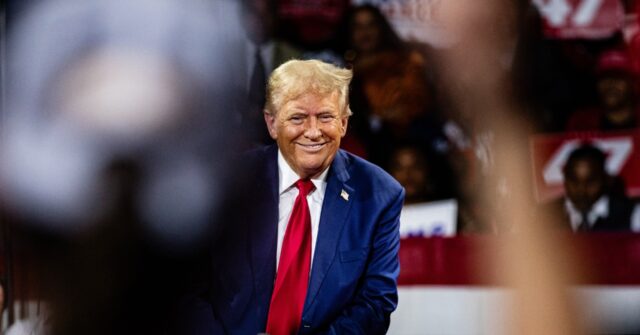In the 2024 presidential election, President-Elect Donald Trump achieved a significant victory over Vice President Kamala Harris in Nevada, a state key to securing Electoral College votes. Decision Desk HQ declared Trump the winner early Wednesday morning, marking his total electoral count at 286—far surpassing the 270 votes required to reclaim the presidency. This announcement confirmed Trump’s successful strategies and solidified his position as a prominent figure in American politics, fan the flames of a deeply polarized electorate hungry for change.
As results poured in, the New York Times reported Trump leading the vote with approximately 52 percent compared to Harris’s 49 percent, with over 80 percent of votes tallied. This narrow margin underscored the competitive nature of the race, particularly in battleground states like Nevada, where the political landscape has shifted in recent years. Notably, Trump’s ability to resonate with various voter demographics demonstrated his adeptness at mobilizing support among constituents who may have previously aligned with different political ideologies or parties.
Jon Ralston, editor of the Nevada Independent, acknowledged Trump’s victory by stating, “It’s over for Harris in NV,” signaling the definitive end to Harris’s campaign in the state. Ralston highlighted the unexpected nature of Trump’s success, particularly noting his ability to compete effectively in Clark County, which typically leans Democratic. He suggested that the assumptions about independent voter behavior were flawed, indicating a complex electoral environment wherein voters did not conform strictly to expected partisan patterns, complicating predictions for both candidates.
Moreover, Republicans established a strong lead in both early voting and in-person voting, with a margin of nearly 50,000 votes reported by noon local time. This early advantage allowed Trump’s campaign to solidify its winning trajectory as the results continued to roll in. It was evident that ground game strategies and voter engagement efforts paid off for Republicans, reflecting a shift in voter sentiment that could have broader implications for future elections.
The announcement of Trump’s victory also highlighted the media’s role in shaping public perception of the election. Major networks, including Fox News, confidently called Nevada for Trump prior to the official results being finalized. Following this announcement, Trump delivered an impassioned victory speech, framing his win as a testament to the voters’ desire for change and addressing the key issues that resonated with the electorate.
As Trump took the stage to celebrate his triumph, he positioned himself as a leader ready to tackle the challenges facing the country. This moment not only marked a significant victory for Trump’s political career but also emphasized the shifting dynamics within the American electoral landscape, signaling potential ramifications for the Democratic Party’s strategy moving forward. The 2024 election cycle proved that the political landscape remains fluid, making it imperative for both parties to reassess their approaches to engage and understand voter sentiments in an ever-changing environment.

